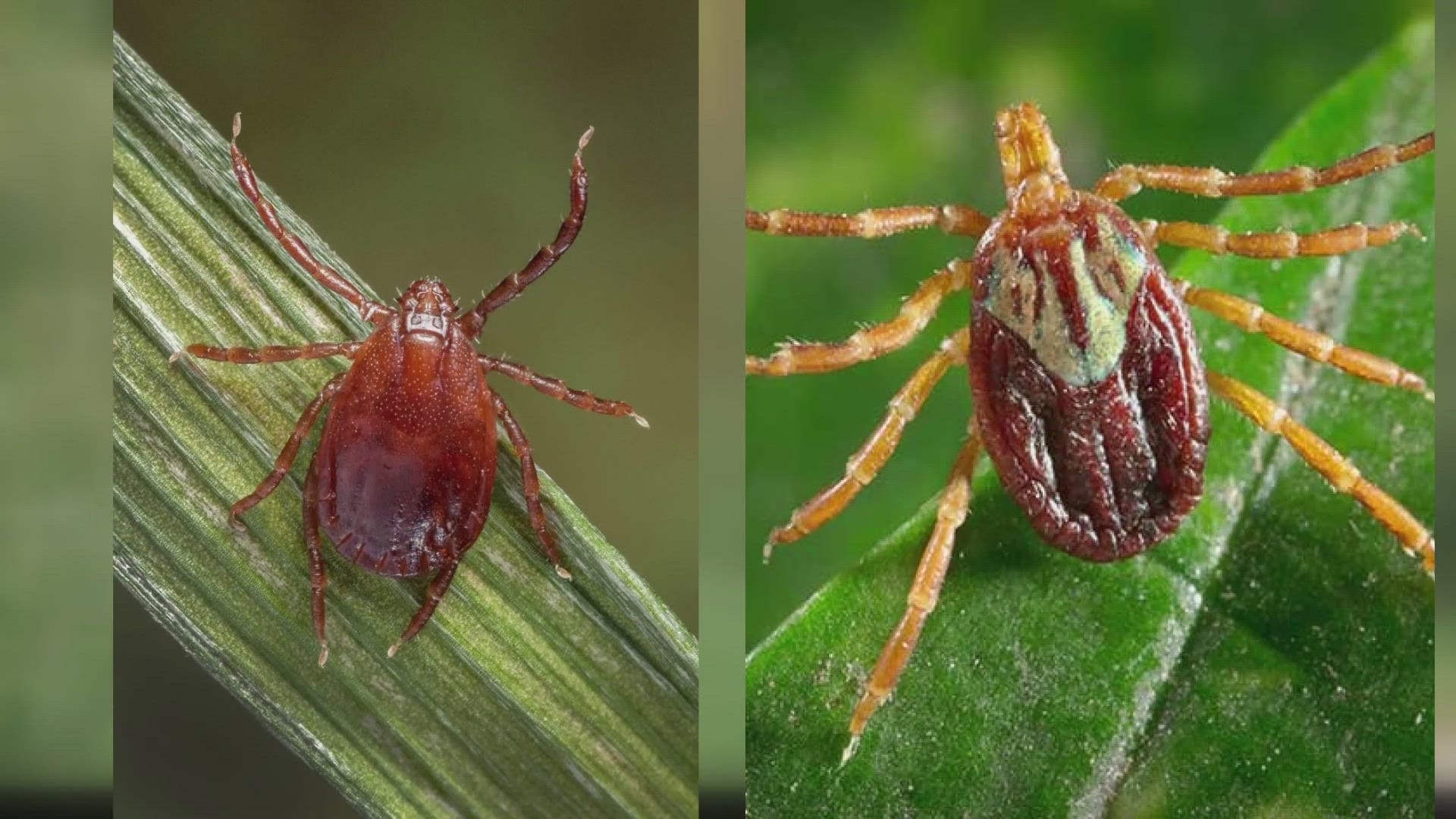DELAWARE COUNTY, Ohio — There are a couple new ticks in Delaware that shouldn’t be there and Delaware Public Health District wants people to know what they are.
The two new invasive species, the Asian longhorned tick and the Gulf Coast tick, were both found while the county was collecting ticks in parks around the county.
The Asian longhorned tick is more of a hazard to livestock. It reproduces quickly and can be difficult to detect.
This is the first time it was found in Delaware County.
An Asian longhorned tick was found in Franklin County in recent years. While they have been known to transmit diseases, like spotted fever, to humans in other parts of the world, Sarah Fink, the Health District Solid Waste and Vector program manager for Delaware Public Health, said there haven’t been any cases of that happening since the tick was first found in New Jersey back in 2017.
"That large number aspect of it is kind of the scariest part,” said Fink. "There was a cattle farm closer to the Ohio River, they actually lost some cows because they were so heavily infested with ticks."
Since the Asian longhorned tick doesn’t need a mate to reproduce, one tick can quickly become thousands.
To protect against infestations, farmers should check livestock for ticks regularly and should report unusual or large infestations to the Ohio Department of Agriculture and their local veterinarian.
As for the Gulf Coast tick, it was last found in Delaware County in 2009. They usually aren’t found this far north, as the name implies, and are known to transmit a form of spotted fever.
How did both of these end up in Ohio? Fink said they can be carried on animals or clothes back from vacations, on shipping containers and other things. She said as Ohio winters are getting milder, the invasive ticks aren’t dying off like would have in the climate.
They can be difficult to identify.
To identify the ticks, someone would need a well-trained eye and a microscope to positively be sure what is what.
"I've gone to trainings where they've kind of pointed out the difference of this exotic Asian longhorned tick versus a very common rabbit tick that look alike,” said Fink.
DPHD staff are continuing to capture and monitor ticks in the county. Fink said there are options for the public, too. If there is a tick someone thinks is strange or is concerning, snap a picture and send to their office.

